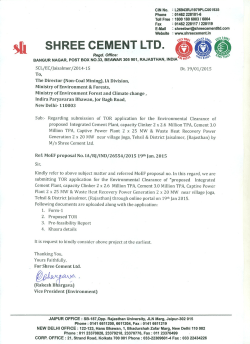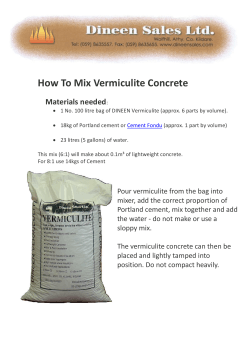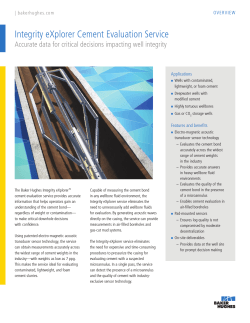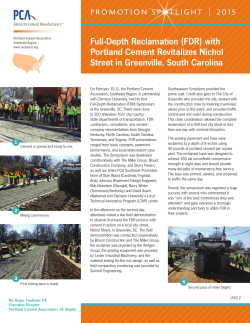
Retsch explain why representative sample preparation is important
Retsch explain why representative sample preparation is important for reliable quality control To produce high-quality cement, the mineralogical and chemical composition of raw materials as well as intermediate and finished products has to be determined. At each stage of the production, samples have to be taken, processed and analysed to ensure quality control without gaps. Retsch offers a range of instruments that are used for sample preparation during the complete production process, from the quarrying of the raw materials to the final product. The typical sample preparation process involves preliminary size reduction, sample division and fine size reduction before the sample can be submitted to further analyses. Primary size reduction or other elements such as sulphur or lime (CaO). Inhomogeneous materials A constantly growing number of cement plants not only use fossil fuels for the cement clinker burning process but also secondary fuels. By 2002, roughly 25% of the required amount of fossil fuels had already been replaced by secondary fuels in German cement plants. Secondary fuels either consist of residues from a wide range of manufacturing and production areas or of residues with a high calorific value which are usually obtained from heterogeneous waste. These secondary fuels must meet all the requirements of primary fuels with regards to product quality and environmental safety. Therefore, they have to be prepared and analysed in the same way and, in addition, they have to be analysed for their heavy metal content. As secondary fuels are often soft and elastic materials, primary size reduction has to be effected with cutting and shearing forces such as are applied in cutting mills. Retsch’s heavy-duty cutting mill SM 2000 easily handles inhomogeneous sample materials and is especially safe to operate. It is available with heavy-metal-free Jaw crusher BB 200 for feed grinding tools for neutral-to-analysis sizes up to 90 mm. sample preparation which makes it ideal for processing secondary fuels. For the fine grinding down to 200 µm, the Ultra-Centrifugal Mill ZM 200 is the ideal tool. It grinds extremely fast and is very easy to clean which allows for high sample throughput. For the preliminary size reduction of hard, brittle materials such as lime stone, cement clinker and coal, jaw crushers of various sizes are the most effective tools. Retsch offers four basic models which are suitable for feed sizes from 35 mm – 150 mm. These powerful crushers combine a high degree of size reduction with a high throughput and can be used for a variety of sample types thanks to a wide selection of breaking jaw materials. For the fine size reduction various types of mills can be used, depending on the sample material and the subsequent analysis. A typical sample preparation process of products such as cement clinker, gypsum, raw mix or lime involves a jaw crusher BB 100 or BB 200 for pre-crushing the material to a size of approximately 5 mm. After that the crushed material has to be divided further to receive a representative part sample for which Quality control is an important aspect a rotary tube divider such as the PK of cement production. Sample 1000 can be used. It allows for the preparation is an essential part of extraction of 1 – 3 samples. Now the it, because only a representative part sample is ground to sizes of 100 and reproducible processing of the µm and smaller, either in a ball mill sample material ensures reliable or using a vibratory disc mill such as and meaningful analysis results. Retsch’s RS 200. This mill is typically Retsch offers a range of instruments used for sample preparation to XRF for dividing, crushing, grinding and Optimum sample preparation of cement clinker for XRF analysis. analysis and delivers grind sizes down sizing all materials which are involved to 100 µm and smaller in the production in as little as 30 to 40 process of cement. seconds. The grinding To ensure the right results of the RS 200 choice of instrument are highly reproducible. for the right sample The pulverised sample material, Retsch offers can now be pressed to free-of-charge sample a pellet which is used testing in application Figure 3. A sample of inhomogenous secondary fuels; the same for XRF analysis to laboratories all over the sample after primary size reduction in the SM 2000 cutting mill; determine heavy metals world._____________l and again after pulverisation in the ZM 200 ultra centrifugal mill. Conclusion World CemenT March 2007 www.worldcement.com
© Copyright 2025





















